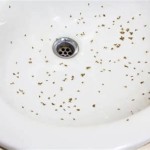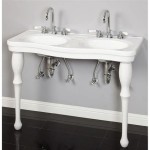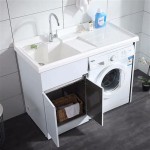Essential Aspects of Bathroom Sink Silicone Sealant: A Comprehensive Guide
Bathroom sink silicone sealant plays a crucial role in maintaining the functionality and aesthetics of your bathroom. It forms a watertight seal around the sink, preventing leaks and damage to the surrounding surfaces. To ensure the effectiveness and longevity of your sealant, it's essential to understand its composition, properties, and application techniques.
In this article, we will explore the essential aspects of bathroom sink silicone sealant, including its composition, types, properties, and application guidelines. By understanding these aspects, you can make informed decisions when choosing and applying sealant, ensuring a leak-free and visually appealing bathroom.
Types of Silicone Sealants
There are two main types of silicone sealants used for bathroom sinks: acidic and neutral-cure. Acidic sealants release acetic acid during curing, which can damage certain materials like marble and metal. Neutral-cure sealants, on the other hand, emit no harmful vapors during curing and are safe for use on a wide range of surfaces.
Properties of Silicone Sealants
Bathroom sink silicone sealants possess several essential properties that make them suitable for this application. These properties include:
- Waterproof: Silicone sealants effectively repel water, preventing leaks and moisture penetration.
- Flexibility: They are flexible and can accommodate movement in the sink due to temperature changes or settling.
- Adhesion: Silicone sealants bond well to a variety of surfaces, including porcelain, tile, and glass.
- Resistance: They are resistant to mold, mildew, and UV radiation, ensuring durability in humid and exposed environments.
Application Guidelines
To ensure a successful application of bathroom sink silicone sealant, follow these guidelines:
- Clean and prepare the surface: Clean the area around the sink thoroughly and remove any dirt, debris, or old sealant.
- Mask off the edges: Apply painter's tape around the perimeter of the sink to prevent sealant from getting on unwanted surfaces.
- Apply sealant: Cut the tip of the sealant tube at a 45-degree angle and apply a bead of sealant around the edge of the sink.
- Smooth the sealant: Use a wet finger or a tool to smooth the sealant, ensuring it is evenly applied and free of air bubbles.
- Remove masking tape: Once the sealant is applied, carefully remove the masking tape while the sealant is still wet.

Dap Silicone Max 2 8 Oz Clear Premium Kitchen And Bath Sealant 08794 The Home Depot

Loctite Silicone Waterproof Multipurpose Adhesive Sealant 2 7 Oz Clear Tube Each 908570 The Home Depot

Ge 10 1 Oz White Silicone Bath Tub And Tile Caulk Pack 2749484 The Home Depot

Ge 10 1 Oz White Silicone Bath Tub And Tile Caulk Pack 2749484 The Home Depot

Dap Kwik Seal Plus 10 1 Oz White Premium Kitchen And Bath Siliconized Caulk 18510 The Home Depot

Ge Renew 2 7 Oz White Kitchen And Bath Sealant 2768332 The Home Depot

How To Silicone A Bathroom Sink

120ml Waterproof Strong Adhesive Sealant Kitchen Bath Tile Resin Caulk Repair Glue Toilet Base Com

Dap Silicone Max 2 8 Oz Clear Premium Kitchen And Bath Sealant 12 Pack 7079808794 The Home Depot

Ge Advanced Silicone Kitchen Bath Sealant Pack Of 1 White 2 8 Fl Oz Tube Com






